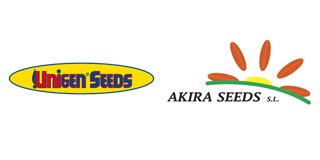
UNIGEN SEEDS SPAIN
Foliar application of urea advances bud break, bloom and harvest in cherimoya
Spain is the world?s leader producer of cherimoya. Regrettably, more than 90% of the Spanish production is based on just one cultivar, a circumstance that causes market oversupply during October-November leading to an abrupt decline in cherimoya prices during this period. Previous experiences have demonstrated that early hand-defoliation allows sub-petiolar buds to sprout and bloom in advance of control trees. However, a negative effect on the amount of bud break has been noticed
20 April, 2020
Postharvest, poscosecha, postcosecha, cherimoya, chemical defoliation, hydrogen cyanamide, urea, chirimoya Spain is the world?s leader producer of cherimoya. Regrettably, more than 90% of the Spanish production is based on just one cultivar, a circumstance that causes market oversupply during October-November leading to an abrupt decline in cherimoya prices during this period. Previous experiences have demonstrated that early hand-defoliation allows sub-petiolar buds to sprout and bloom in advance of control trees. However, a negative effect on the amount of bud break has been noticed in response to premature defoliation. Here, we evaluated the effects of foliar application of urea (8%) as a cherimoya defoliant alone and combined with hydrogen cyanamide at 3%. Urea at 8% applied at mid-January caused the abscission of 60% of the leaves 20 days after application, 6 weeks before natural leaf drop. Cool spring temperatures trimmed this phenological advancement to just 3 weeks at bud break and to only 2 weeks at flowering. The earliness effect of chemical defoliation was afterwards maintained throughout the season, allowing mean harvest date to be advanced by 12 days. Hydrogen cyanamide applied in February, prior to natural leaf abscission, did not modify the course of leaf drop, but advanced bud break by 2 weeks. This effect disappeared at bloom and harvest. The combination of urea and hydrogen cyanamide did not improve results achieved by the sole application of urea. Early defoliation diminished bud break levels in urea treated trees, even after adding hydrogen cyanamide. Nonetheless the treatments did not modify flower number or fertility and did not affect hand-pollination procedures needed in this crop. Fruit size and yield were also unaffected by the treatments. ? Sources:Gonz?lez, M., Hueso, J.J., Alonso, F. and Cuevas, J. 2013. FOLIAR APPLICATION OF UREA ADVANCES BUD BREAK, BLOOM AND HARVEST IN CHERIMOYA (ANNONA CHERIMOLA MILL.). Acta Hort. (ISHS) 975:269-274, Acta Horticulturae 975, IV International Symposium on Tropical and Subtropical FruitsThe picture is by crchirimoya.org ? ? ? ? ? ?









